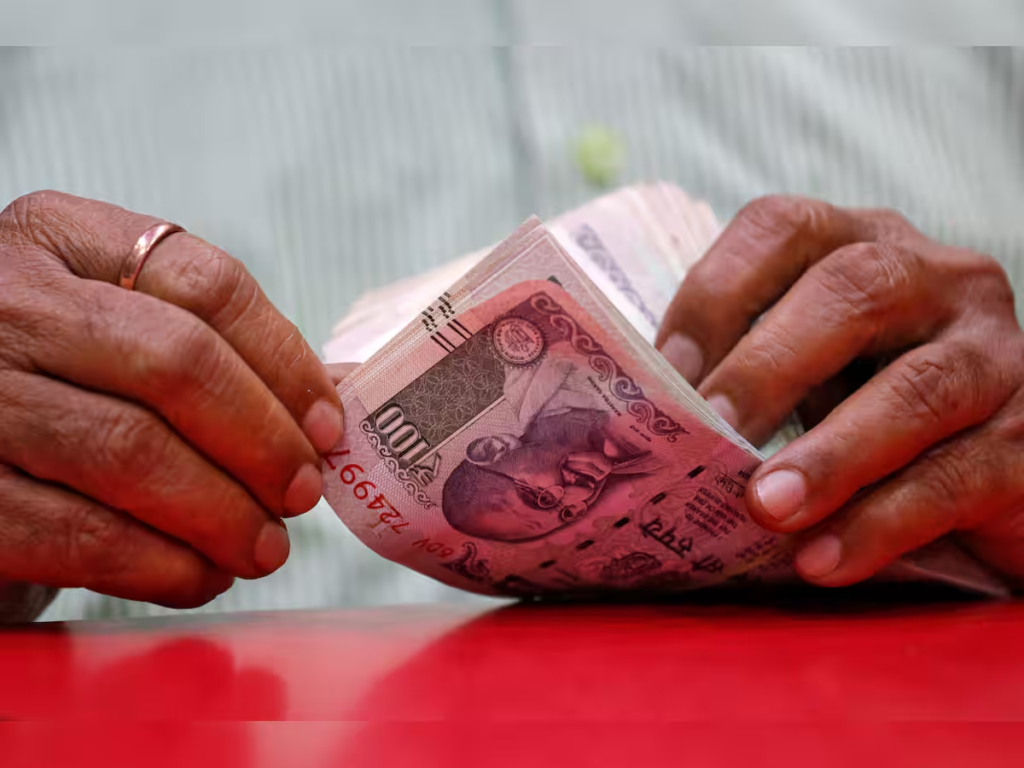Rupee’s Exchange Rate Index Reaches 108.14 in November, Its Highest Ever

The Indian rupee has been hitting new lows against the US dollar daily, but in “real effective” terms, its value has reached an all-time high.
According to the latest data from the Reserve Bank of India (RBI), the Real Effective Exchange Rate (REER) index for the rupee climbed to a record 108.14 in November, reflecting a 4.5% increase since the start of this year.
Unlike the standard exchange rate, which measures the rupee solely against the US dollar, the REER evaluates the rupee’s value in relation to a basket of 40 international currencies. These currencies belong to countries that make up about 88% of India’s annual trade. Additionally, the REER adjusts for inflation differences between India and its trading partners, providing a more comprehensive measure of the rupee’s real value.
The Real Effective Exchange Rate (REER) of the rupee, which is calculated similarly to indices like consumer prices or industrial production, uses 2015-16 as its base year. The weights assigned to currencies in this index are determined by each country’s contribution to India’s total foreign trade.
In early 2022, the rupee’s REER stood at 105.32 but dipped to 99.03 by April 2023. However, the trend has shifted since then, with the rupee steadily gaining strength. By October 2023, the REER rose to 107.20 and further climbed to 108.14 in November, marking a notable recovery.
The reason behind the rupee’s seemingly contradictory movement—weakening and strengthening at the same time—can be traced to the dollar’s performance over the last three months, particularly following Donald Trump’s victory in the U.S. presidential election on November 5.
From September 27 to December 24, the dollar index futures, which measure the U.S. dollar’s value against six major global currencies (euro, yen, pound, Canadian dollar, Swedish krona, and Swiss franc) using March 1973 as the base, rose from 99.88 to 108.02. A significant part of this increase occurred after November 5, when the index was at 102.98.
During this stretch, the rupee lost value against the US dollar, dropping from 83.67 to 85.19. However, it gained value against other major currencies—appreciating from 93.46 to 88.56 against the euro, 112.05 to 106.79 against the British pound, and from 0.5823 to 0.5425 against the Japanese yen.
In simple terms, the rupee’s weakening is more about the dollar getting stronger against all currencies rather than the rupee losing significant ground. The dollar’s increase can be attributed to several factors, including policy statements from Donald Trump. These have involved proposals for raising tariffs on imports, especially from China, implementing tax cuts funded by government deficits, and focusing on the mass deportation of undocumented immigrants. If these proposals turn into actual policies, they are expected to increase inflation in the U.S., pushing the Federal Reserve to maintain a tighter monetary policy.
This has already been reflected in the surge of U.S. 10-year government bond yields, which climbed from 3.75% to 4.59% between September 27 and December 24. As a result, global capital has been shifting toward the U.S., leading to outflows from other countries, including India.
Over a broader period, starting from early 2022, the rupee has weakened against major currencies like the dollar (falling from 74.30 to 85.19), the euro (84.04 to 88.56), and the British pound (100.30 to 106.79). The only exception has been its strengthening against the Japanese yen (from 0.6454 to 0.5425). However, despite these declines, the rupee’s Real Effective Exchange Rate (REER) has gone up. This increase can be attributed to India’s inflation rate being higher compared to its key trading partners.
In 2015-16, the rupee’s Real Effective Exchange Rate (REER) was set to a baseline of 100, representing a “fair” valuation. When the REER goes above 100, it indicates that the rupee is overvalued, meaning its exchange rate hasn’t declined enough to account for higher inflation within India. As a result, imports become more affordable, while Indian exports face challenges in maintaining competitive pricing globally. This significant overvaluation of the rupee today might explain why the Reserve Bank of India (RBI) seems to be allowing the rupee to weaken—at least against the US dollar—to address these imbalances.










